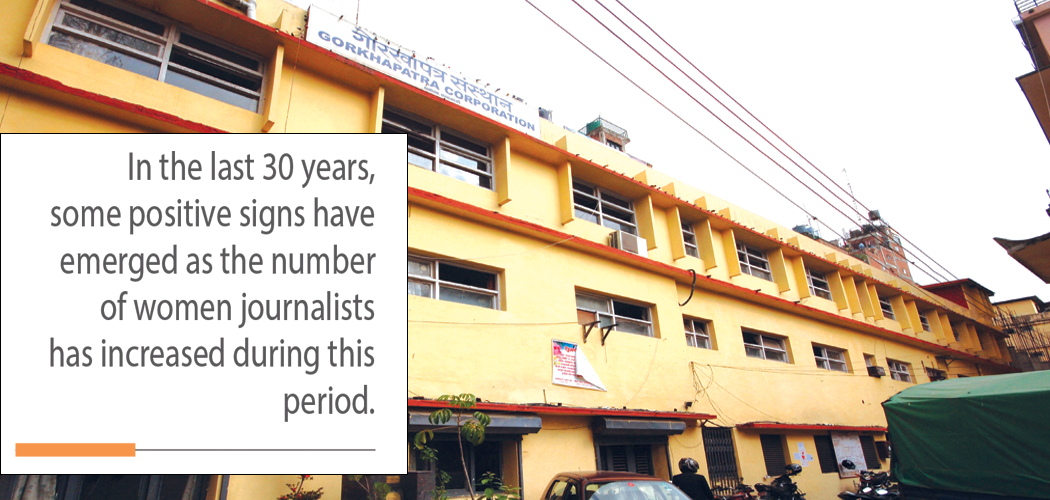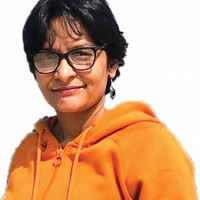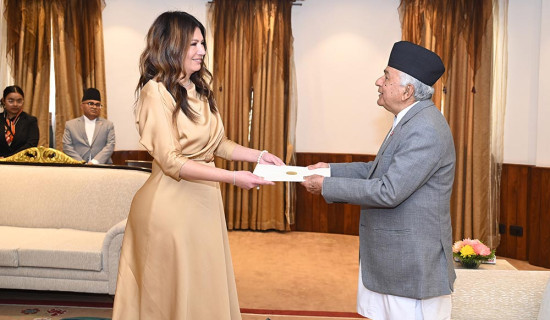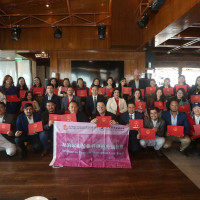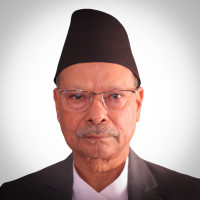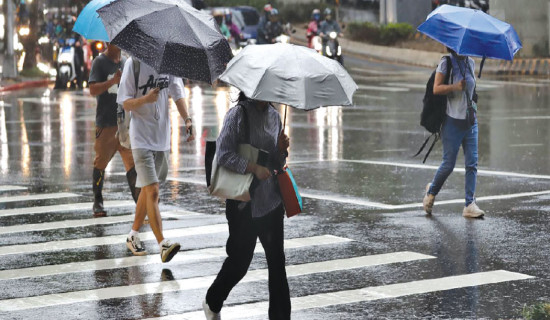- Thursday, 11 December 2025
Efforts For Gender-Friendly Newsrooms
Nepal’s news mediascape has continued to grow over the years. The expansion of media outlets since the 1990s has reached over 8,000. Among them, over 800 are radio stations, 164 television stations, 3,120 online news media platforms, and over 7,000 are print media houses in Nepal.
Altogether 13, 077 journalists have registered themselves at the Federation of Nepalese Journalists as members, according to the Centre for Media Research. Despite this, male journalists still dominate the voice in the news media.
Policy Initiatives
Efforts to make the news media gender-friendly have gained momentum over the years with provisions for the representation of women and for the portrayal of women in the news media through policy initiatives at government and private institutions and
A study showed that the number of female journalists grew exponentially over the past ten years, with over 20 per cent increase in the number of female journalists since 2006.
The policy of gender equality can provide an equal opportunity for employment and promotion of female staff and fair representation of women's portrayal in the news media. The relationship between gender and the media has thus been recognised as a major area for the overall development of women.
Since the Beijing Platform for Action (BPfA) was defined at the Fourth World Conference on Women convened by the United Nations in 1995, two strategic objectives were included: 1) increase the participation and access of women to expression and decision-making in and through the media and 2) promote a balanced and non-stereotyped portrayal of women in the media. But the voice that makes the newsroom gender-friendly by increasing the number of women journalists, continuing to develop their careers in the field of journalism and opportunities to lead the newsroom are considered major challenges toward a gender-friendly news media environment.
Despite the increment of women in news media, media has failed to promote and encourage women journalists to continue their profession for a longer period, said Nitu Pandit, a journalist and past president of Sancharika Samuha.
Women in the newsroom face many challenges. The Global Report on the Status of Women in the News Media has identified that "women represent only a third (33.3 per cent) of the total journalism workforce of the 522 companies" surveyed around the world. The study brought to notice that women represented one-third (38.7 %) in the senior
management position in the companies surveyed compared to men that represented nearly two-thirds (61.3%).
According to Sancharika Samuha, out of 1,143 female journalists surveyed only 8.1 per cent of women work as an editor but these numbers are generally representative of the media house that is owned by themselves or their families.
At least 3.6 per cent of women work as chief reporters, while 2.9 per cent work as senior correspondents/bureau chiefs and 2.7 per cent as publishers or managers. Nepal is yet to see female journalists in the position of editor-in-chief in any mainstream national dailies or television broadcasting stations, Pandit said.
Numbers Grow
Even though there is a low representation of women journalists compared to male journalists, there is an increment in the number of women journalists in Nepal. Asmita, one of the first such publications registered in 1988, represented the voice of women and took stock of women journalists in the early 1990s.
A senior journalist and the founder of ‘The Weekly Mirror,' Prem Kumari Pant, shared her struggle as a female journalist in 1970s, where she had to do every work including the collection of advertisements, news, production and distribution of the newspaper in the market. “It was challenging to be a journalist in the early phase as I had to do every task alone. These days journalism has become an easy profession for females as compared to the past,” she said.
Being a journalist was an honour in the early days, people used to respect a journalist whether the person was a female or a male journalist. The perception of society towards journalism was different then, she said.
“The commutative capability of women journalists has increased inside the newsroom. “Earlier, women were known as soft-beat journalists, but now they are handling the challenging beats and performing at par with their male counterparts. The discrimination between men and women in the newsroom has been disappearing slowly,” said Shiva Gaule, a senior journalist and editor-in-chief of Onlinekhabar.
“The number of women in the profession is still low compared to men journalists mainly because of the various problems within the profession such as low salary. Journalism is yet to become a secure profession, Gaule said.
In the last 30 years, some positive signs have emerged as the number of women journalists has increased during this period. However, concerns regarding women's equal participation, role in decision making in the news media, sustainability in the newsroom, facilities provided to them and improvement in the portrayal of women journalists have remained a focal point of discussion to understand the situation of women journalists.
According to Neetu Pandit, media houses have no policy toward empowering and providing equal opportunity to female journalists like men. In short, many positive signs have lately appeared regarding the reforms in media houses and newsrooms where women journalists have secured an important role." Still, there is a long way to go."
(Aryal is associated with this daily)

